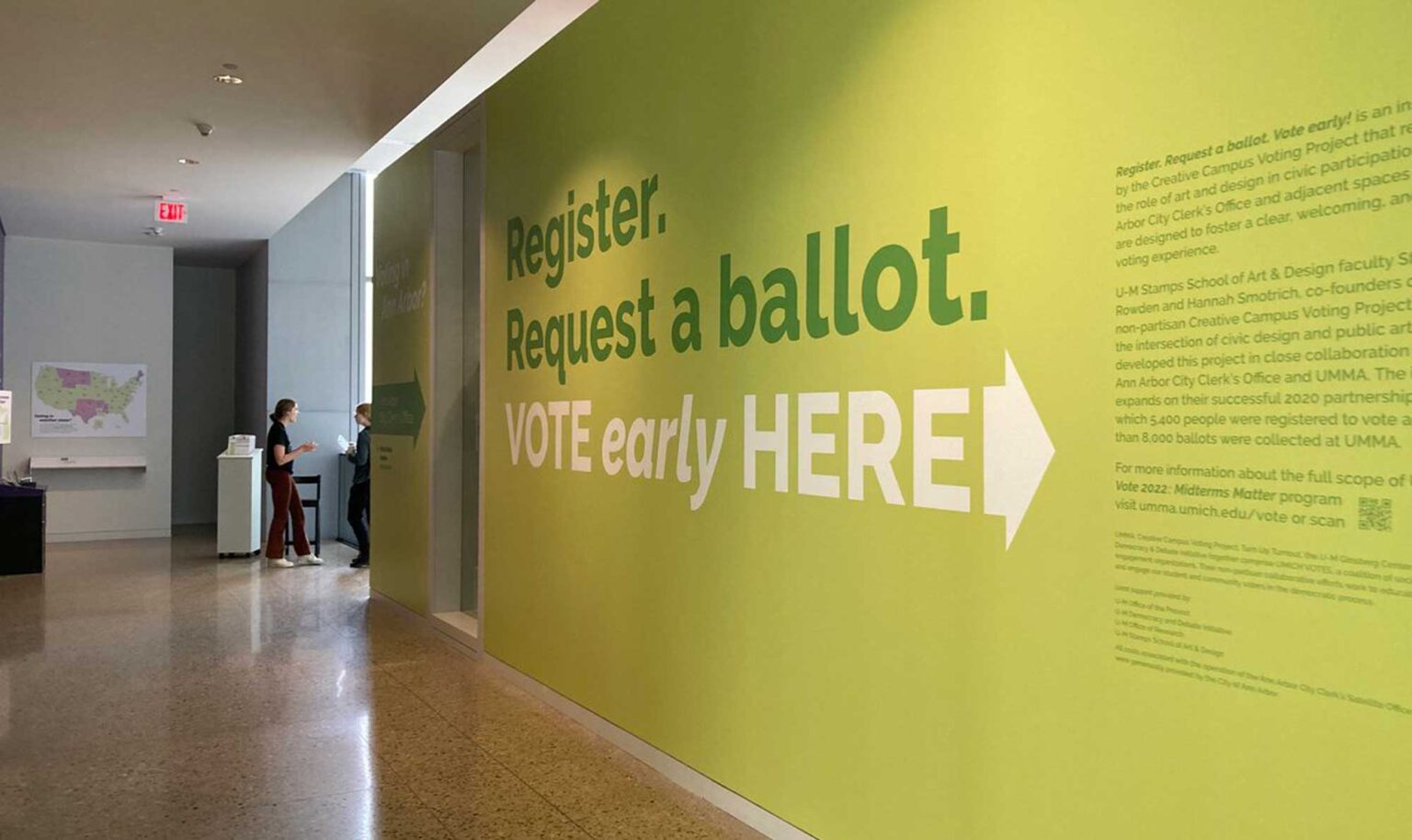Expert Q&A
If you’re feeling a bit confused by the constant media coverage about presidential election polls, you’re not alone.
Whether it’s the polls’ margins of error or their fairness and accuracy, the information can become important for some voters in their election choices. And do the polls matter since the presidential winner will be determined by the Electoral College?
“Yes,” said Michael Traugott, University of Michigan professor emeritus of political science and communication studies, and research professor emeritus at the Center for Political Studies at the Institute for Social Research.
“In two out of the last six presidential elections, a Republican candidate with a minority of the total votes became president, as Americans were reminded that it is not the popular vote but the Electoral College totals that determine the outcome.”
Do polls matter to voters?
We know that many people pay attention to polls because they are interested in what other citizens think about issues of the day. During the campaign, people can learn from preelection polls what their fellow citizens are thinking about important issues and what their candidate preferences are. Citizens also believe in the principle of representative government and may expect their views to be reflected in the laws and policies that are enacted or that need to be revised because they are not reflecting what citizens want or expect.
Polls are important because elections are infrequent, and issues arise that should have been discussed during a campaign or did not even exist at the time of the campaign. So the conduct of polls in between elections is important for communicating these preferences.
How long have there been polls? How are they conducted?
At the start of the 19th century, something called straw polls were introduced where products like grain or popcorn were made available in different packaging or containers marked with candidate or party names. Sales were tallied as an indicator of popular preferences. Polling as we know it today began in the 1930s in the United States by George Gallup, Elmo Roper, and Archibald Crossley in partnerships with media organizations. In these early stages, polls were conducted face-to-face in people’s homes by interviewers.As landline telephones penetrated American households, interviewing switched to this mode of data collection, and then as cellphones became ubiquitous that was the prevalent mode. As cost pressures grew on pollsters and their media partners, there has been a shift to online interviewing using the internet and cellphone applications. This has raised important methodological questions about the representativeness of polling data in terms of how the online panels of potential respondents are formed and in a period of declining response rates. There is a lot of statistical modeling of poll data now, starting with elaborate weighting schemes; polls no longer represent the simple aggregation of responses to interviewers’ questions.
How do voters decide which polls to follow? What is the best way to interpret the numbers?
Most people don’t have the methodological or statistical background to interpret poll results knowledgeably or with confidence. One of the important roles of journalists is to ensure that “bad” data don’t get into the news stream so people are misinformed about the true state of public opinion.
For preelection polls involving the trial heat question about the relative standing of the candidates, there are several websites that rate pollsters by their historical accuracy record. These include Nate Silver, 538, and the New York Times. I have co-authored a book intended to inform citizens about how polls are conducted and reported and how to evaluate them, The Voter’s Guide to Election Polls, now in its sixth edition.
Several swing states often decide the elections. Would it be ideal if the polls focused on those states rather than having a national emphasis?
A few swing states that have recently been competitive are where the candidates devote their time, money, and effort. Many public websites have begun to focus on estimating the outcome in terms of Electoral College votes. To do this, they have to focus on state-level polls, many of which recently have had larger estimation errors than the national polls. Polling averages in states can reduce the size of such errors but not eliminate them. Often the polls are charged with being off when it is the use of polls in statistical models whose assumptions are opaque that could be at fault. There is a need for greater transparency in how these models work.
You’ve studied polls and elections for several decades. Do you have any new poll research?
In my latest research, I am using survey-based experiments to learn how people evaluate poll results. We find that individuals evaluate polls as less credible when the results show a majority of people hold a view contrary to their own — on an issue or about political figures. My collaborators and I have shown this phenomenon of motivated reasoning in such evaluations in the United States, Mexico, and England.
(Lead image credit: Michigan Photography.)




Helena Hardin - 2023
I would have more confidence in the polls if there was not so much discrepancy in their results. It is difficult to know which one to folllow (if any). You can look up two different polls conducted at the same moment in time and they will have a 10% difference. I feel that social media and the news media help to skew and muddy results as they are dependent on the person(s) conducting the poll. Does that go hand in hand with the comment of not agreeing/believing in a poll if it varies from your values? Maybe.
Reply
Beth Vershure - 1972
Thank you. There remains a paucity of info re contemporary polling methodology. My experience – informal inquiries and formal polling – is that very few people answer unknown cell phone callers. In AZ I’ve yet to find one person who’s been polled this election season! Who are these polled people? While statistical error is often reported, few outside academia understand it. Polling methodology should be part of the reported results or at least a footnote to top line results.
Reply
Michael Simon - 1981
Some polls seem to me to be designed to influence public opinion rather than measure it. Polling really only gives me a general sense of how close the election is likely to be. Momentum can even be a mirage, as the mix of pollsters reporting in any given week changes. When considering new polling, one needs to remember not only that polling can be inaccurate but also the goal of media organizations – they want your eyeballs.
Reply